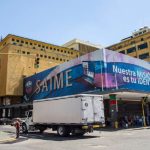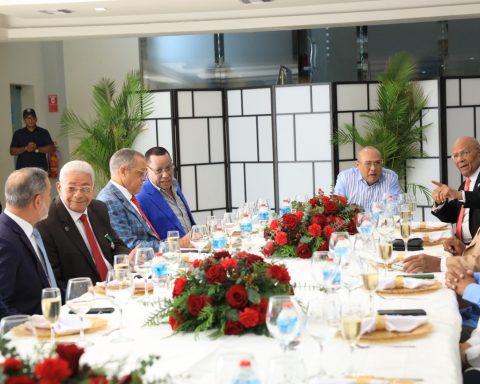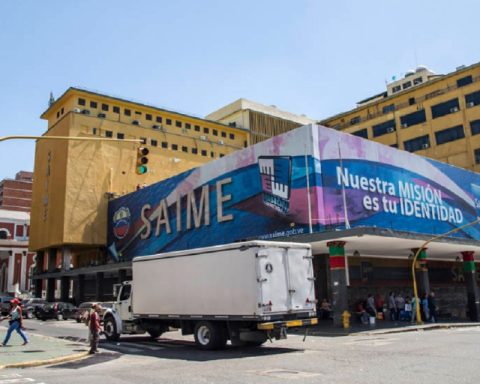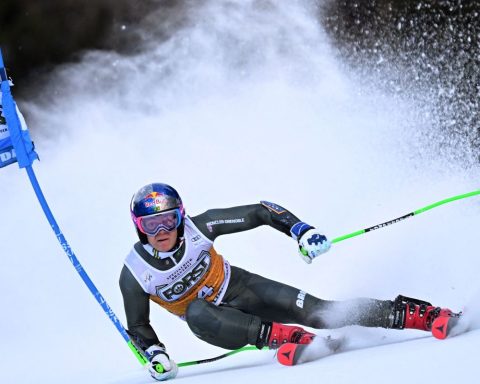In the homes of the young people shot in the Trelew Massacre, their photos, memories and family stories still survive, 50 years after that collective crime that was committed by members of the Navy at the Almirante Zar base.
After the escape that occurred on August 15, 1972during the dictatorship headed by Alejandro Lanusse, 19 of those arrested were stranded at the airport and they believed in the promise that, by surrendering, their safety would be guaranteed. But they ended up prisoners again at the Almirante Zar naval base, where one night they were tortured and shot. Only three survived the massacre and they were in charge of telling the horror they witnessed on August 22, 1972 to keep alive the story that turns 50.

The survivors – the Sociology graduate María Antonia Berger (30), the Medicine student Alberto Miguel Camps (24) and the Chemical Engineering student Ricardo René Haidar (28)– They were disappeared and murdered some time later, so the post of exercising the memory passed to their relatives.
Ricardo Rene Haidar

“We chose to rescue him as a hero for all that his fight meant. Beyond the tears we can remember him with pride,” they told Télam lhe two youngest sons of Ricardo Haidar, Marco and José.
Ricardo lived in San Guillermo, north of Santa Fe, until he went to study Chemical Engineering in the provincial capital, where he began military service in Montoneros.
He had four children who today can tell who their father was by the few memories they have and the many stories they were told and that they were “nurturing that absent figure”.
“Ricardo, or the ‘Turco’, as they called him, was a soccer lover, a great athlete. I remember that I once asked him and we assume that he was a fan of Colón, a sabalero. In his town they told us that he was very cute and that he always had someone in love. Good tongues say that he was a gallant, “both brothers said with laughter.
Ricardo, like the rest of the survivors, was released and disappeared some time later. On December 19, 1982, he was kidnapped, taken to the ESMA and it was never known what happened to his body.
Edward Capello

Another of the young men who was brutally shot on the night of August 22, 1972 was called Eduardo Adolfo Capello and was 24 years old.
Eduardo studied Economic Sciences and worked at Banco Italiano. He was going to college when he started militancy, and those who knew him always highlighted his ability to find alternatives to conflicts.
His nephew, Eduardo Capello, did not get to know him because he was born a couple of years later, in 1975, but his grandparents told him several stories that show that he was “very funny and sociable, easy going and always in a good mood.” even from a very young age.
Eduardo was very close to his parents, who they traveled every 15 days in the Citroën 3CV to visit him in Trelew, where they stayed four or five days because of the distance to the maximum security prison. He was especially close to his mother, Soledad, to whom he wrote weekly letters recounting his experience in prison and talking about “being where he had to be.”
“My grandmother always tells some funny stories about him. Once, when he was two years old, she was knitting and asked him to turn off the radio that was on in the room. She asked him if he knew how to do it, he said yes, but the minutes passed and the radio was still on. Grandma stood up and found him at the door with one little hand behind and the other in front saying to the radio ‘Shhhh, shut your mouth I tell you, shut your mouth I tell you’, which was what my grandfather used to tell him when he was taking a nap and wanted to shut him up. He thought that it was also done that way, “recalled his nephew, touched by the anecdote.
Miguel Polti

Mariano Ravier, cousin of Miguel Polti, says that “Frichu” -as they called him all his life- was studying to be a chemical engineer when he was arrested in Rawson. His brother, José Polti, was also assassinated in Córdoba.
“It was a house with a political opening and they were 21-year-old kids. My uncles have told me that “El Pepe” (José Polti) was very outgoing and in the family they called him ‘black sheep’ for the quilombo But Miguel was shy, withdrawn, very intelligent and with a deep social commitment,” said Mariano.
He also recalled that “They were good kids, very humane and committed people” and that they really liked the movies. “They had 8-millimeter cameras with which they recorded and from a very young age they made short films,” he reviewed.
Among the recordings that the family was able to recover, they found several images of the boys, just 16 or 17 years old, pretending to play the guitar and smoking cigarettes in the room.
“They were kids playing with the cameras. They had a certain vocation towards cinema because they bought those elements, but they were showing everyday life. When we found the material, we sat down to see it with my aunt who told me that they didn’t know how to play anything on the guitar. That’s why I know that their thing is not music, but cinema, “she said.
Three other of those shot: Mariana Pujadas, Clarice Laplace and Jorge Ulla.
Maria Angelica Sabelli
On the other hand, María Sabelli, niece of Maria Angelica Sabelli, describes her aunt as a very cheerful person who liked to share “not only ideas, but also everything they had”. Although she did not know her, her great-aunt Chela helped her reconstruct her story.
“She liked mathematics very much, she went to study at the UBA Exact Sciences and was quite a good student, but she had to leave when she went into hiding,” María said.
years before, when he went to the Colegio Nacional Buenos Aires, he began to talk about politics around the dining room table with friends and colleagues who were going to have a snack at his house.
“It was developed thanks to my grandparents welcoming all those kids and lovingly offering them things so that they feel free to chat whatever they want, share ideas beyond studies. They started an independent magazine and gave ideas to change reality. She was only 14 years old, but it was a time of much discussion and debate,” Maria recalled.
And he added that over time, Angélica had to stop talking to her family about certain things because “it was complicated” and they were also at risk of being persecuted.
“I don’t know what music I listened to, but there was a mexican song that she always sang which said ‘When a dove comes to your window, I opened the window and it is I who come to talk to you’. I have this memory of her that my great-aunt Chela passed on to me. This date is very emotional “, she recalled very moved when citing the popular song” La Paloma “.
Humberto Toschi
Humberto Toschi was also among the young people shot.who was 26 years old at the time and who, before being arrested, worked as a laborer in Córdoba.
When remembering her husband, Ilda Bonardi remarks that he was a person with many friends and very sociable, with great convictions and ideals. Humberto came from an upper class, liked to play car races, fish and studied architecture. Ilda says that he “did the things that all young people do at that age.”
“Everyone, each and every one of them had the common life of that age: they played football, rugby, studied, hunted, others had an artistic inclination and all of them militancy found them in the cities. Most were students, but They not only shared a social sensitivity, but also had a political militancy that I think is important to vindicate,” Ilda remarked.
















